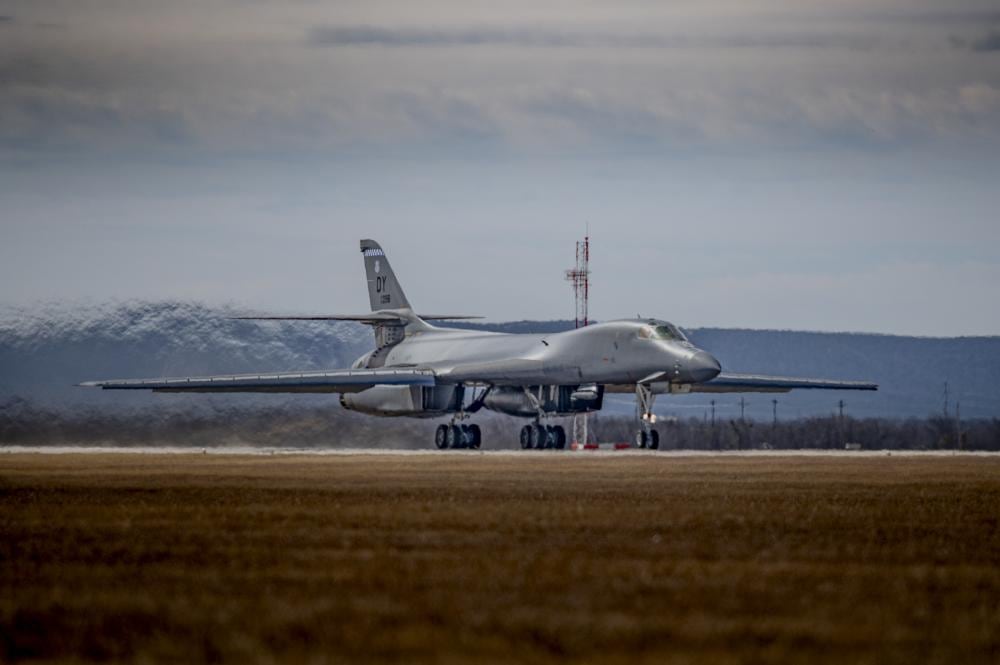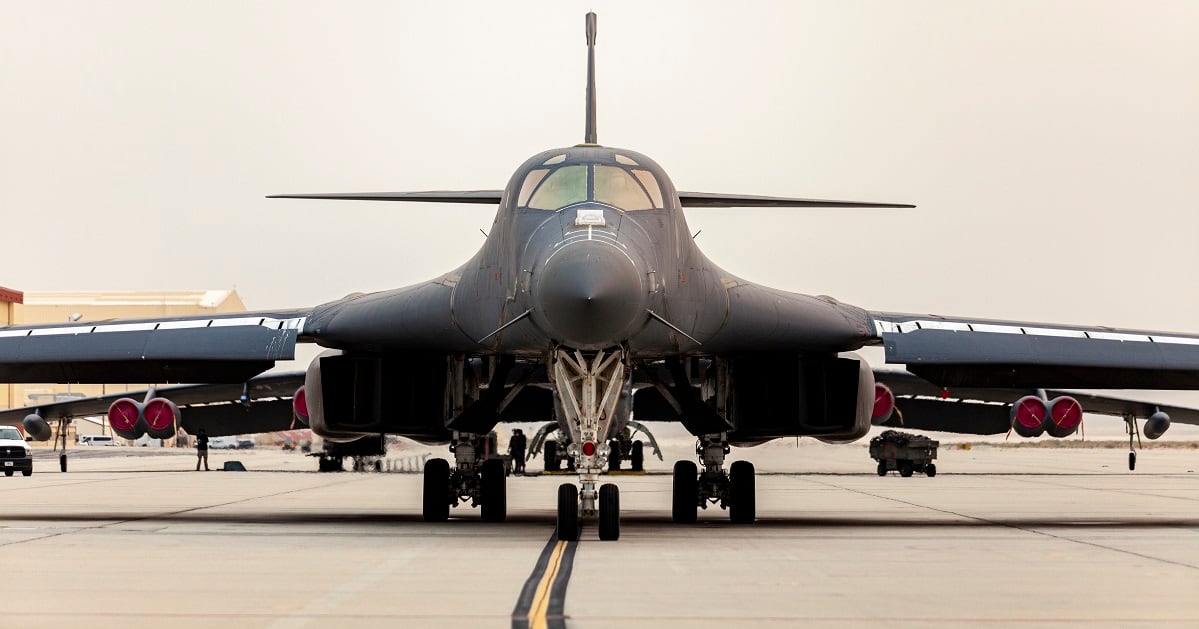The fire chief at Dyess Air Force Base, Texas, on Tuesday provided the first public recounting of the effort to extinguish a burning B-1B Lancer bomber after its engine caught fire last month.
In a May 10 release, Chief Master Sgt. Charles Clawson of the 7th Civil Engineer Squadron described the seven-minute emergency response, which began at 10:03 p.m. when the base’s fire and emergency services unit responded to a report of a B-1B ablaze on the flightline.
RELATED

Flames engulfed the bomber’s entire left side and stretched as high as 75 feet into the air, Clawson said. Firefighters believed the blaze was coming from one of the jet’s four engines, which had exploded during routine maintenance.
The first firefighters pulled up at 10:05 p.m. One unit armed with 3,000 gallons of water took aim at the No. 1 engine from the front of the bomber. Two other crews on either side of the jet also worked to push flames away from the fuselage and extinguish fires on the ground.
The fire died out at 10:10 p.m.
A video posted to the “Air Force amn/nco/snco” Facebook page on April 21 shows fire billowing from a B-1B while a few people scramble near the flames. The Air Force has not confirmed the video’s authenticity.
Two maintainers were hurt in the incident but did not need to be rescued, Clawson wrote. Their injuries were not life-threatening, and they were treated at a nearby hospital and released, the wing said at the time.
“Our B-1 fleet and warfighters remain ready to execute any long-range strike mission,” 7th Bomb Wing command Col. Joseph Kramer added in a release last month.
Clawson noted the Lancer fire provided the chance for first responders to put new training into action, after being slow to adjust to more advanced fire trucks purchased in 2020. Multiple brake and hydraulic fires on base since early 2021 helped them hone new tactics before they faced a major emergency last month.
“The firefighters at Dyess AFB have a new outlook on the effectiveness of [ultra-high pressure firefighting] vehicles,” he wrote. “Their new tactics have shown their capability to extinguish a major fire in minimal time.”
RELATED

The Air Force currently owns around 40 B-1Bs, which do not carry nuclear weapons, and is in the process of retiring the fleet. It received its first B-1B in 1985 and first deployed it in combat against Iraq in 1998. The planes are based at Ellsworth AFB, South Dakota, and at Dyess.
B-1Bs have been plagued by safety issues, from ejection seat woes to fuel tank problems. In 2018, a four-member Lancer crew received the Distinguished Flying Cross for safely landing their bomber while its wing was on fire.
The Air Force has not released further details on the condition of the bomber that caught fire in April or what may have caused the explosion. An investigation is underway.
This story was corrected May 12 to reflect that the B-1B Lancer is not a stealth bomber.
Rachel Cohen is the editor of Air Force Times. She joined the publication as its senior reporter in March 2021. Her work has appeared in the Washington Post, the Frederick News-Post (Md.), Air and Space Forces Magazine, Inside Defense, Inside Health Policy and elsewhere.





